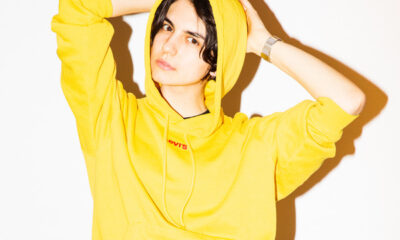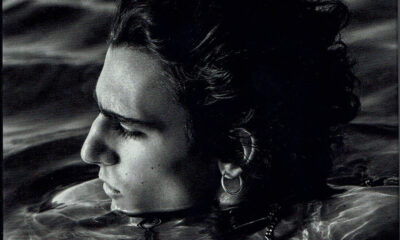Music
July Hip Hop Roundup: New York is Back
MIKE and Caleb Giles are leading a NYC hip hop comeback.
The 1990s were a glorious time for New York hip hop.
Nas redefined what it meant to be a true lyricist with dexterous flows, socially conscious lyrics, and unorthodox rhyme schemes. His debut album Illmatic encapsulated all of those unique attributes into one dizzying portrait of The Big Apple.
A Tribe Called Quest enjoyed the most commercial success out of the Native Tongues collective. They pioneered what many know today as alternative hip hop (mainly because of their strong Afro-infused aesthetic). And of course, Biggie Smalls solidified himself as one of the greats with street anthems like “Juicy” and “Hypnotize.”
Behind the scenes, producers such as Pete Rock (Nas’ main collaborator), DJ Premier ( who also worked with Nas and produced “N.Y. State of Mind”), and Havoc were pushing the boundaries of creativity through obscure jazz samples and razor-sharp boom-bap drums.
According to the Hip Hop Evolution documentary on Netflix, these producers would occasionally battle to see who could make the best beat. The competition lead to some of the best instrumentation in recent hip hop memory.
This new aesthetic ushered in a golden age for rap, one that lead to competition outside of NYC, mainly those on the west coast. Artists brought the best out of each other, and everyone was happy with the results… except those on the west coast.
Almost thirty years later, NYC is starting to resurface as a hotbed for distinctive voices.
Much of this can be attributed of Earl Sweatshirt’s underrated masterpiece from 2018, Some Rap Songs. A delirious old-school aesthetic prevailed throughout the project, with help from Navy Blue — an underground producer who created his own waves on Soundcloud with the release of his debut “Gangway for Navy.”

Heavy on soul samples, low on drums, Some Rap Songs was Earl’s breakthrough of sorts, his Illmatic if you will. It’s cutting edge, introspective and family-oriented (“The boy been gone a few summers too long from road runnin’/Trunk full of old hunnids/Of course my old lover was scorned, we grow from it.”) Not to mention, emotionally raw. While similar to the 90s era, Some Rap Songs rebelled against the idea of the boom bap style. Instead, it simplified by stripping back to just the sample and the lyrics.
The entire album is a full-fledged escape from the mainstream trap zeitgeist. Earl created the perfect lyrical album for millennials. Short one or two minute tracks, astute songwriting, a tight theme, and a poignant delivery.
Some Rap Songs became the blueprint for a bridge between old and new techniques. The project indirectly contributed to the critical acclaim of MIKE’s (underground New York rapper) own album, tears of joy, a release that I wrote (and praised) about in my June Roundup.
While structurally similar, tears of joy acts as its own entity because of MIKE’s knack for curating his own image. Arguably, he was even more nostalgic than Earl, especially on songs such as “SUMMER 17,” where he deftly raps: “Not again/Play favorite, what’s the purpose if they not you mans/City bakin’ in the furnace, dog, we lost the land.”
Contrary to Earl — who seems to be healing old wounds on Some Rap Songs — MIKE reflects on his childhood, and all of the tribulations that came with it. He’s not complaining about them either. If anything, he’s appreciative of his come-up, and understands he wouldn’t be where he’s at if not for the Big Apple ( see “GR8FUL 2K19”).
Following in the footsteps of MIKE and Earl is a 21year-old Bronx native, Caleb Giles, who is formally a part of Earl’s Standing in the Corner rap collective. His July album Under the Shade builds off of that piano-driven sound, adding a melodic touch to the production.

Songs like “Too” (feat. Cleo Reed) and “Gather” help to expose Giles’ melancholy inflections. His voice, while similar in flow, sounds a lot less gruff than Earl and MIKE’s. He balances a breezier cadence to his raps (“Blxcberries”) with in-depth lyricism about poverty, and how it affects his present-day place in hip hop.
The complexities within his songwriting are what stand out the most. On “Gather” he questions the credibility of being rich-rapping, “Damn I wish I had a hundred dollars/Damn I wish it all made sense…I wish a dream didn’t cost a dollar/But is a dream still a dream if you rich?”
The curiosity explored in his lyrics are way beyond the wisdom of an average 21 year-old. Giles’ eagerness is empathetic, allowing youthfulness to shine over everything else. It’s an attribute that can easily be found within the millennial generation, giving me reason to think a musical style like this could resonate with people over the next five years or so.
In the meantime, it’s enough to know that New York is back, and better than ever. And begs the question: could this be the new mainstream?
If you obsess over singers and bands, and are one of those people who make a playlist for every occasion, join CMN’s Music Journalism Course and get real-time experience, intense feedback on your writing, exposure to music industry insiders, and a great place to display build your portfolio. Get all the details on the Music Journalism Course here.











